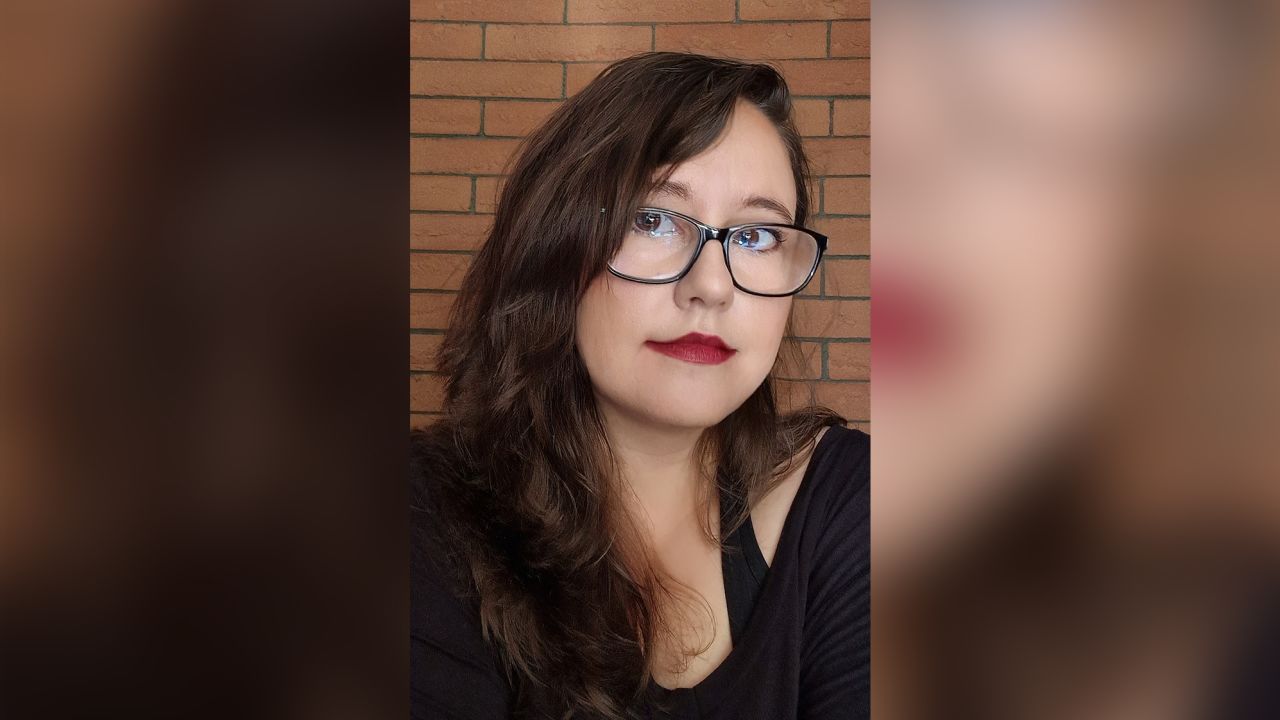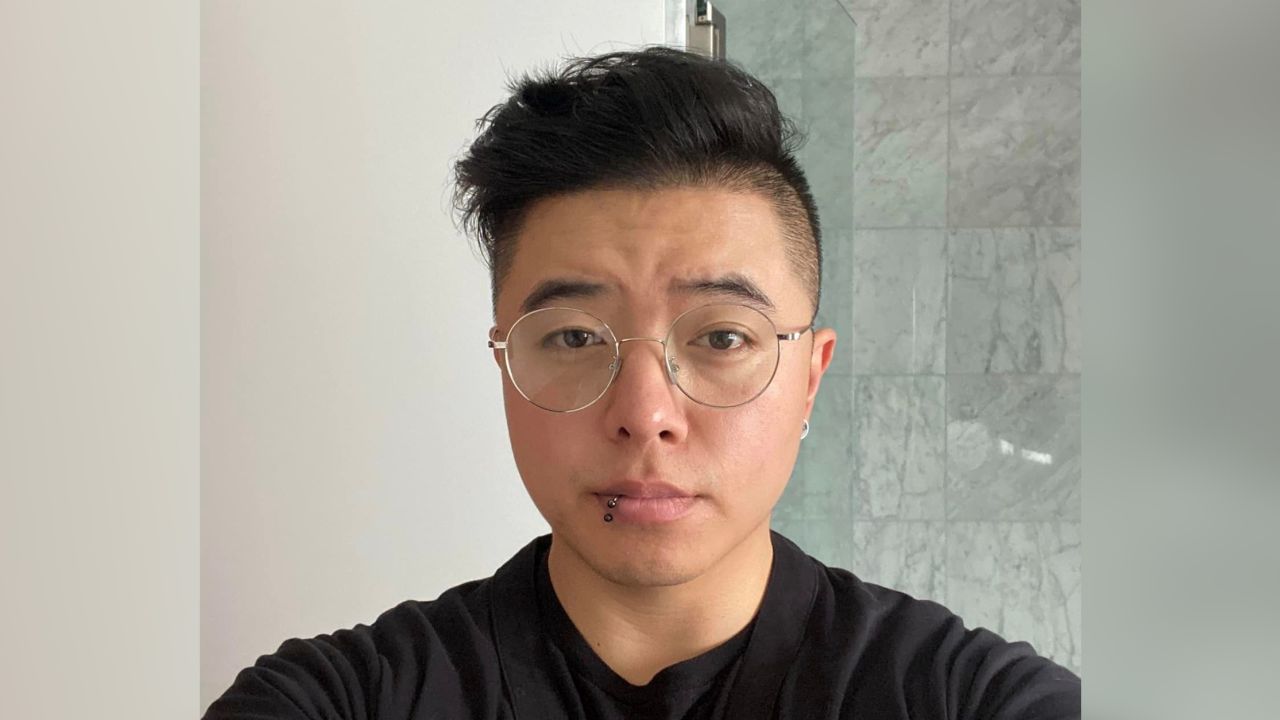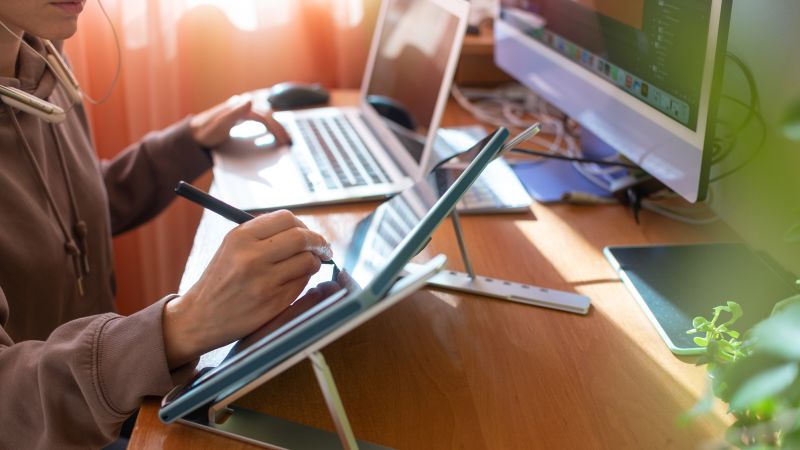CNN
—
For months, Eveline Fröhlich, a visual artist based in Stuttgart, Germany, has been feeling “helpless” as she watched the rise of new artificial intelligence tools that threaten to put human artists out of work.
Adding insult to injury is the fact that many of these AI models have been trained off of the work of human artists by quietly scraping images of their artwork from the internet without consent or compensation.
“It all felt very doom and gloomy for me,” said Fröhlich, who makes a living selling prints and illustrating book and album covers.
“We’ve never been asked if we’re okay with our pictures being used, ever,” she added. “It was just like, ‘This is mine now, it’s on the internet, I’m going to get to use it.’ Which is ridiculous.”

Recently, however, she learned about a tool dubbed Glaze that was developed by computer scientists at the University of Chicago and thwarts the attempts of AI models to perceive a work of art via pixel-level tweaks that are largely imperceptible to the human eye.
“It gave us some way to fight back,” Fröhlich told CNN of Glaze’s public release. “Up until that point, many of us felt so helpless with this situation, because there wasn’t really a good way to keep ourselves safe from it, so that was really the first thing that made me personally aware that: Yes, there is a point in pushing back.”
Fröhlich is one of a growing number of artists that is fighting back against AI’s overreach and trying to find ways to protect her images online as a new spate of tools has made it easier than ever for people to manipulate images in ways that can sow chaos or upend the livelihoods of artists.
These powerful new tools allow users to create convincing images in just seconds by inputting simple prompts and letting generative AI do the rest. A user, for example, can ask an AI tool to create a photo of the Pope dripped out in a Balenciaga jacket — and go on to fool the internet before the truth comes out that the image is fake. Generative AI technology has also wowed users with its ability to spit out works of art in the style of a specific artist. You can, for example, create a portrait of your cat that looks like it was done with the bold brushstrokes of Vincent Van Gogh.
But these tools also make it very easy for bad actors to steal images from your social media accounts and turn them into something they’re not (in the worst cases, this could manifest as deepfake porn that uses your likeness without your consent). And for visual artists, these tools threaten to put them out of work as AI models learn how to mimic their unique styles and generate works of art without them.
Some researchers, however, are now fighting back and developing new ways to protect people’s photos and images from AI’s grasp.
Ben Zhao, a professor of computer science at University of Chicago and one of the lead researchers on the Glaze project, told CNN that the tool aims to protect artists from having their unique works used to train AI models.
Glaze uses machine-learning algorithms to essentially put an invisible cloak on artworks that will thwart AI models’ attempts to understand the images. For example, an artist can upload an image of their own oil painting that has been run through Glaze. AI models might read that painting as something like a charcoal drawing — even if humans can clearly tell that it is an oil painting.
Artists can now take a digital image of their artwork, run it through Glaze, “and afterwards be confident that this piece of artwork will now look dramatically different to an AI model than it does to a human,” Zhao told CNN.
Zhao’s team released the first prototype of Glaze in March and has already surpassed a million downloads of the tool, he told CNN. Just last week, his team released a free online version of the tool as well.
Jon Lam, an artist based in California, told CNN that he now uses Glaze for all of the images of his artwork that he shares online.
Lam said that artists like himself have for years posted the highest resolution of their works on the internet as a point of pride. “We want everyone to see how awesome it is and see all the details,” he said. But they had no idea that their works could be gobbled up by AI models that then copy their styles and put them out of work.

“We know that people are taking our high-resolution work and they are feeding it into machines that are competing in the same space that we are working in,” he told CNN. “So now we have to be a little bit more cautious and start thinking about ways to protect ourselves.”
While Glaze can help ameliorate some of the issues artists are facing for now, Lam says it’s not enough and there needs to be regulation set regarding how tech companies can take data from the internet for AI training.
“Right now, we’re seeing artists kind of being the canary in the coal mine,” Lam said. “But it’s really going to affect every industry.”
And Zhao, the computer scientist, agrees.
Since releasing Glaze, the amount of outreach his team has received from artists in other disciplines has been “overwhelming,” he said. Voice actors, fiction writers, musicians, journalists and beyond have all reached out to his team, Zhao said, inquiring about a version of Glaze for their field.
“Entire, multiple, human creative industries are under threat to be replaced by automated machines,” he said.
While the rise of AI images are threatening the jobs of artists around the world, everyday internet users are also at risk of their photos being manipulated by AI in other ways.
“We are in the era of deepfakes,” Hadi Salman, a researcher at the Massachusetts Institute of Technology, told CNN amid the proliferation of AI tools. “Anyone can now manipulate images and videos to make people actually do something that they are not doing.”
Salman and his team at MIT released a research paper last week that unveiled another tool aimed at protecting images from AI. The prototype, dubbed PhotoGuard, puts an invisible “immunization” over images that stops AI models from being able to manipulate the picture.
The aim of PhotoGuard is to protect photos that people upload online from “malicious manipulation by AI models,” Salman said.
Salman explained that PhotoGuard works by adjusting an image’s pixels in a way that is imperceptible to humans.

“But this imperceptible change is strong enough and it’s carefully crafted such that it actually breaks any attempts to manipulate this image by these AI models,” he added.
This means that if someone tries to edit the photo with AI models after it’s been immunized by PhotoGuard, the results will be “not realistic at all,” according to Salman.
In an example he shared with CNN, Salman showed a selfie he took with comedian Trevor Noah. Using an AI tool, Salman was able to edit the photo to convincingly make it look like he and Noah were actually wearing suits and ties in the picture. But when he tries to make the same edits to a photo that has been immunized by PhotoGuard, the resulting image depicts Salman and Noah’s floating heads on an array of gray pixels.
PhotoGuard is still a prototype, Salman notes, and there are ways people can try to work around the immunization via various tricks. But he said he hopes that with more engineering efforts, the prototype can be turned into a larger product that can be used to protect images.
While generative AI tools “allow us to do amazing stuff, it comes with huge risks,” Salman said. It’s good people are becoming more aware of these risks, he added, but it’s also important to take action to address them.
Not doing anything, “Might actually lead to much more serious things than we imagine right now,” he said.

